
T-34 variants
Encyclopedia
The T-34 medium tank is one of the most-produced and longest-lived tanks of all time.
Identification of T-34
variants can be complicated. Turret castings, superficial details, and equipment differed between factories. New features were added in the middle of production runs or retrofitted to older tanks. Damaged tanks were rebuilt, sometimes with the addition of newer-model equipment and even new turrets. Some tanks had appliqué armor made of scrap steel of varying thickness welded on to the hull and turret; these tanks are called s ekranami ("with screens"), although this was never an official designation for any T-34 variant.
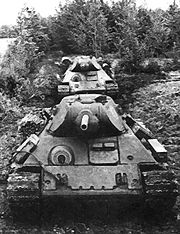
in World War II referred to the two main production models as T-34/76 and T-34/85, with minor models receiving letter designations such as T-34/76A—this nomenclature has been widely used in the west, especially in popular literature. Since at least the 1980s, many academic sources (notably AFV
expert Steven Zaloga
) have used Soviet-style nomenclature: T-34 and T-34-85, with minor models distinguished by year: T-34 Model 1940. (This page has adopted that convention.)
Since the break-up of the Soviet Union, newly declassified sources have demonstrated that all T-34s with the original turret and F-34 gun (conventionally known as Models 1941 and 1942) were officially called "Model 1941", and hexagonal-turret T-34 (Model 1943) was officially called "Model 1942".
Because many different factories manufactured T-34s, with components built by subcontractors, the listing below merely gives a broad overview and does not capture every possible variant. Also, not every factory implemented all model changes at the same time. For example, factory No. 112 continued building narrow-turret 76 mm armed models long after all other plants had switched to hexagonal-turreted tanks.
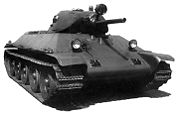

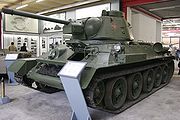

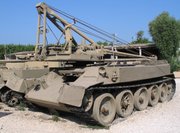
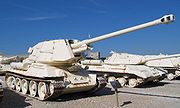
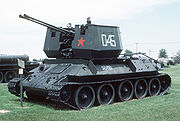
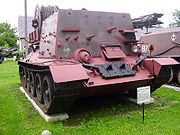
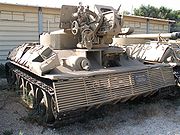
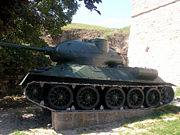
Identification of T-34
T-34
The T-34 was a Soviet medium tank produced from 1940 to 1958. Although its armour and armament were surpassed by later tanks of the era, it has been often credited as the most effective, efficient and influential design of World War II...
variants can be complicated. Turret castings, superficial details, and equipment differed between factories. New features were added in the middle of production runs or retrofitted to older tanks. Damaged tanks were rebuilt, sometimes with the addition of newer-model equipment and even new turrets. Some tanks had appliqué armor made of scrap steel of varying thickness welded on to the hull and turret; these tanks are called s ekranami ("with screens"), although this was never an official designation for any T-34 variant.

Model naming
German intelligenceMilitary intelligence
Military intelligence is a military discipline that exploits a number of information collection and analysis approaches to provide guidance and direction to commanders in support of their decisions....
in World War II referred to the two main production models as T-34/76 and T-34/85, with minor models receiving letter designations such as T-34/76A—this nomenclature has been widely used in the west, especially in popular literature. Since at least the 1980s, many academic sources (notably AFV
Armoured fighting vehicle
An armoured fighting vehicle is a combat vehicle, protected by strong armour and armed with weapons. AFVs can be wheeled or tracked....
expert Steven Zaloga
Steven Zaloga
Steven J. Zaloga is an American historian, defense consultant, and a well-known author on military technology. He received a bachelors degree cum laude in history from Union College and a masters degree from Columbia University....
) have used Soviet-style nomenclature: T-34 and T-34-85, with minor models distinguished by year: T-34 Model 1940. (This page has adopted that convention.)
Since the break-up of the Soviet Union, newly declassified sources have demonstrated that all T-34s with the original turret and F-34 gun (conventionally known as Models 1941 and 1942) were officially called "Model 1941", and hexagonal-turret T-34 (Model 1943) was officially called "Model 1942".
Because many different factories manufactured T-34s, with components built by subcontractors, the listing below merely gives a broad overview and does not capture every possible variant. Also, not every factory implemented all model changes at the same time. For example, factory No. 112 continued building narrow-turret 76 mm armed models long after all other plants had switched to hexagonal-turreted tanks.
List of models and variants

Tanks



- T-34
- Model 1940 (German designation: T-34/76A) - This was a production model built in 1940, armed with a L-11L-11 76.2 mm tank gunThe L-11 was a Soviet 76.2mm tank gun, used on the earliest model of the T-34 medium tank. L-11 was used on T-34 Model 1940 and KV-1 Model 1939....
76.2 mm tank gunTank gunA tank gun is the main armament of a tank. Modern tank guns are large-caliber high-velocity guns, capable of firing kinetic energy penetrators, high explosive anti-tank rounds, and in some cases guided missiles. Anti-aircraft guns can also be mounted to tanks.-Overview:Tank guns are a specific...
; it had a welded or cast two-man turret. Due to a shortage of new V-2 diesel engines, the initial production run from the Gorky factory was equipped with the BT tank's MT-17 gasoline-powered engine and an inferior transmissionTransmission (mechanics)A machine consists of a power source and a power transmission system, which provides controlled application of the power. Merriam-Webster defines transmission as: an assembly of parts including the speed-changing gears and the propeller shaft by which the power is transmitted from an engine to a...
and clutchClutchA clutch is a mechanical device which provides for the transmission of power from one component to another...
(Zheltov 2001:40–42). - Model 1941 (T-34/76B) - This production model was built in 1941, with a heavier armor, a cast or welded two-man turret, and the superior F-34 tank gun (although some were fitted with older F-32 tank gun).
- Model 1941 (T-34/76C) - This was a production model built in 1942, with increased armor protection and many simplified components. It had new 'waffle' tracks, new wheel patterns, a new driver's hatch and a round transmission access cover. Some had the headlight moved to the left side of the hull. Most were equipped with cast two-man turrets although a few welded ones remained.
- Model 1942 (T-34/76D, E, and F) - This production model was built from May 1942 to 1944, with a cast or pressed hexagonal turret. It was nicknamed "Mickey MouseMickey MouseMickey Mouse is a cartoon character created in 1928 by Walt Disney and Ub Iwerks at The Walt Disney Studio. Mickey is an anthropomorphic black mouse and typically wears red shorts, large yellow shoes, and white gloves...
" by the Germans because of its appearance with the twin round turret roof hatches open. Official Soviet military designation was Model 1942. Turrets manufactured in different factories had minor variations, sometimes called "hard-edge", "soft-edge", and "laminate" turrets, but in military service these details did not warrant different designations.- Earlier production is sometimes called Model 1942/43, and was designated T-34/76D by German intelligence.
- Later production variants had a new commander's cupola. This variant was referred to as T-34/76E by the Germans.
- Turrets produced at UralmashUralmashUralmash is a heavy machine production facility of the Russian engineering corporation OMZ. The facility is located in Yekaterinburg, Russia. The surrounding residential area where workers live is also called Uralmash....
in Sverdlovsk (YekaterinburgYekaterinburgYekaterinburg is a major city in the central part of Russia, the administrative center of Sverdlovsk Oblast. Situated on the eastern side of the Ural mountain range, it is the main industrial and cultural center of the Urals Federal District with a population of 1,350,136 , making it Russia's...
) had a distinctive rounded appearance because they were made in a special forge. Tanks produced with these turrets there and at ChelyabinskChelyabinskChelyabinsk is a city and the administrative center of Chelyabinsk Oblast, Russia, located in the northwestern side of the oblast, south of Yekaterinburg, just to the east of the Ural Mountains, on the Miass River. Population: -History:...
were called T-34/76F by the Germans.
- Model 1940 (German designation: T-34/76A) - This was a production model built in 1940, armed with a L-11
-
- T-34/57 - A very small number of T-34s were fitted with the ZiS-4 L/73 high-velocity 57 mm gun in 1941 and 1943 to be used as tank destroyerTank destroyerA tank destroyer is a type of armored fighting vehicle armed with a gun or missile launcher, and is designed specifically to engage enemy armored vehicles...
s. This gun had better penetration than the 76.2 mm F-34 (140 mm of steel at 500 m, as opposed to 90 mm), but the small HE projectile was inadequate for use against unarmored targets. - OT-34 - This was a T-34 flame-thrower tank fitted with an internally mounted flamethrowerFlamethrowerA flamethrower is a mechanical device designed to project a long controllable stream of fire.Some flamethrowers project a stream of ignited flammable liquid; some project a long gas flame. Most military flamethrowers use liquids, but commercial flamethrowers tend to use high-pressure propane and...
replacing the hull machine-gun. Usually it was a modified Model 1941 with the ATO-41 flamethrower or Model 1942 with ATO-42.
- T-34/57 - A very small number of T-34s were fitted with the ZiS-4 L/73 high-velocity 57 mm gun in 1941 and 1943 to be used as tank destroyer
- T-34M - This unit was a prototype (A-43) with improved armor, hexagonal three-man turret, torsion bar suspensionTorsion beam suspensionthumb|250px|A front [[VW Beetle]] suspension cross-sectionA torsion bar suspension, also known as a torsion spring suspension or torsion beam suspension, is a general term for any vehicle suspension that uses a torsion bar as its main weight bearing spring...
, sprung road wheels, and increased fuel and ammunition storage. Five hulls were built, but development was abandoned when the war broke out. - T-34-85
- Model 1943 - This production model was built from February to March 1944 at Zavod 112, with the 85 mm D-5T gun and a new larger cast three-man turret, a commander's cupola and two dome-shaped ventilators clustered together on top of the turret.
- Model 1944 - This was a production model built from March 1944 to the end of 1944, with the simpler 85 mm ZiS-S-53 gun. The radio was moved from the hull into the turret and the commander's cupola was moved rearward. There was an improved layout and a new gunner's sight.
- Model 1945 - This was a production model built in 1944-45, with an electrically powered turret traverse motor, an enlarged commander's cupola with a one-piece hatch, squared front fenders, and the TDP (tankovoy dimoviy pribor) smoke system with electrically detonated MDSh canisters.
- Model 1946 - This was a production model built in 1946, with the improved V-2-34M engine, new wheels and other minor details.
- Model 1960 - A refurbishing program introduced a new V-2-3411 engine and an improved air cleaner, a cooling and lubrication system, a battery generator, new BDSh smoke canisters, an infrared headlight, a driver's sight and a 10-RT radio set instead of the old 9-R.
- Model 1969 (also called T-34-85M) - This was a refurbishing program introducing the new R-123 radio set, 'starfish' roadwheels from the T-54 tank, night driving equipment, drivetrain improvements, repositioned or removed smoke canisters to make a space for additional 200-litre external fuel tanks and a ditching beam at the rear. An external fuel pump was added to ease refueling.
- OT-34-85 (sometimes called TO-34) - This was a T-34-85 flamethrower tank, with the ATO-42 in place of the bow machine gun.
Tank destroyers
- SU-85SU-85The SU-85 was a Soviet self-propelled gun used during World War II, based on the chassis of the T-34 medium tank. Earlier Soviet self-propelled guns were meant to serve as either assault guns, such as the SU-122, or as mobile anti-tank weapons; the SU-85 fell into the latter category...
- This was a T-34 based tank destroyer armed with a 85 mm D-5T gun. - SU-100SU-100The SU-100 was a Soviet tank destroyer. It was used extensively during the last year of World War II and saw service for many years afterwards with the armies of Soviet allies around the world.- Development :...
- This was a T-34 based tank destroyer armed with a 100 mm D-10S gun.
Self-propelled howitzers
- SU-122SU-122The SU-122 was a Soviet self-propelled howitzer used during World War II. The number "122" in the designation represents the caliber of the main armament—a 122 mm M-30S howitzer.-Development history:...
- This unit was a T-34 based self-propelled howitzer armed with a 122 mm M-30S howitzer.
Support vehicles

- PT-34 - This was a mine rollerMine rollerA mine roller or mine trawl is a demining device mounted on a tank or armoured personnel carrier, designed to detonate anti-tank mines. It allows engineers to clear a lane through a minefield which is protected by enemy fire....
tank, mostly built on the T-34 Model 1942 or T-34-85 chassis. - T-34-T (T after T-34- stands for tyagach ["tractor"]) - During World War II, some old, battle damaged T-34 medium tanks were rebuilt as armored recovery vehicles (ARVs) with their turret removed; sometimes the turret ring was plated over or a superstructure was added in place of the turret. They were used solely for towing operations. It is also known under designation TT34.
- SPK-5 (1955) - This was a turretless T-34 fitted with a crane with a capacity of 10 tons on a rotatable mount fitted in the turret ring.
- SPK-5/10M - An SPK-5 was fitted with electro-hydraulic controls for the crane.
- T-34-TO (1958) (TO after the T-34- stands for technicheskoye obsuzhivaniye ["technical maintenance"]) - This variant was a technical maintenance vehicle fitted with an extensive array of tools and a work platform over the engine deck.
Fixed fortifications
- T-34-85 turrets were built into a bunker to create a fixed piece.
Self-propelled howitzers
- T-34-85 were converted into a self-propelled howitzer armed with a 122 mm D-30 howitzer2A18The D-30, or 122-mm howitzer D-30 , is a Soviet howitzer that first entered service in the 1960s. It is a robust piece that focuses on the essential features of a towed field gun suitable for all conditions...
in a cut-away turret.
Tanks
- T-34-85CZ - This was the Czechoslovak production version of T-34-85. It is also known under designation T-36.
Support vehicles
- MT-34 (1950s) (MT stands for mostniy tank ["bridging tank"]) - This unit was a Czechoslovakian conversion with a PM-34 scissors bridge carried on rollers on top of a turretless T-34.
- VT-34 (VT stands for vyprošťovací tank ["recovery tank"]) - This variation was a Czechoslovakian purpose-built recovery vehicle.
Egypt

Tank destroyers
- T-100 - This Egyptian unit was a conversion into a tank destroyer armed with a 100 mm BS-3 anti-tank gun mounted in a heavily modified turret. The changes included flat-plate extensions in the front, rear and top of the turret. A recoil mechanism was placed under the barrel. It is also known under the designation T-34/100.
Self-propelled howitzers
- T-122 - This Egyptian conversion was a self-propelled howitzer armed with a 122 mm D-30 howitzer2A18The D-30, or 122-mm howitzer D-30 , is a Soviet howitzer that first entered service in the 1960s. It is a robust piece that focuses on the essential features of a towed field gun suitable for all conditions...
in a heavily modified turret. The changes included flat-plate extensions in the front, sides, rear and top of the turret. It is also known under designation T-34/122.
Firefighting vehicles
- T-34 tanks were converted into tracked firefighting vehicles used to fight oil fires. Two engines from a MiG-21 were fitted to an overlapping mount on the turret ring.
Self-propelled anti-aircraft guns
- Flakpanzer T-34 - This German conversion was a single T-34 made into a self-propelled antiaircraft gun armed with a 2 cm Flakvierling 38 in a new armored turret with an open top. The single vehicle manufactured was used by PzJagAbt 653 in July 1944..
Tanks
- Type 58 - This tank is a Chinese copy of the T-34-85.
- Type 58 is fitted with sights from the Type 59Type 59The Type 59 main battle tank is a Chinese produced version of the Soviet T-54A tank, an improvement over the ubiquitous T-54/55. The first vehicles were produced in 1958 and it was accepted into service in 1959, with serial production beginning in 1963...
main battle tank. - Type 58-I is a Type 58 fitted with a dome-shaped commanders hatch and an HMG mount.
- Type 58-II is a Type 58-I fitted with an additional cupola with a second HMG mount.
- Type 58 is fitted with sights from the Type 59
Self-propelled anti-aircraft guns

- Type 63 was a Type 58 converted into an anti-aircraft vehicle, armed with Chinese twin 37 mm Type 63 AA guns.
Tanks
- T-34-85M1 - This unit was a product of the Polish refurbishing program. Similar to Soviet Model 1960, it added 'skeleton' roadwheels.
- T-34-85M2 - The Polish refurbishing program produced this tank, similar to Soviet Model 1969, by adding exterior stowage, a deep-wading kit and a snorkel.
Support vehicles
- CW-34 is a Polish derivative of VT-34.
- WPT-34 (1960s) - This was a Polish repair and maintenance vehicle with a superstructure replacing the turret, a crane, a large-diameter telescoping snorkel for deep fording operations as well as a large-spade type earth anchor in the rear. It was converted from T-34 tanks as well as SU-85 and SU-100 tank destroyers.
Tanks
- T-34/55 - This unit was a Syrian modernization of Soviet-made T-34-85s earlier upgraded for export by Czechoslovakia, adding an anti-aircraft machine gun fitted to the commander's copula and other upgrades.
Self-propelled howitzers

- T-34/122 This Syrian conversion is a self-propelled howitzer armed with a 122 mm D-30 howitzer2A18The D-30, or 122-mm howitzer D-30 , is a Soviet howitzer that first entered service in the 1960s. It is a robust piece that focuses on the essential features of a towed field gun suitable for all conditions...
. The gun is facing backwards to preserve the center of gravity. The mount is completely open apart from a mantlet around the base of the gun tube. The rear of the mount includes a folding platform on which the gun crew works when firing the howitzer. While the vehicle is moving the platform is folded to avoid blocking the driver's vision.
Tanks

- Teski Tenk Vozilo A (Heavy Tank Type A) - This was a 1949 Yugoslav tank based on the T34 design. A total of nine prototypes were built. They were designed and built at the height of the danger from Soviet invasion when Yugoslavia was building up its weapons industry. They were designed by reverse engineeringReverse engineeringReverse engineering is the process of discovering the technological principles of a device, object, or system through analysis of its structure, function, and operation...
of the Soviet T-34-85 medium tank without any documentation. They are recognizable by their angled front hull corners, modified hull machine gun mantlet, streamlined turret with cylindrical cupola, muzzle brake on the gun, and external fuel tanks that appear to be notched to fit the hull. An alternate version existed, armed with a gun and a mantlet from the M47 Patton. Two examples survive. One of the prototypes is on display at the military museum in the KalemegdanKalemegdanBelgrade Fortress , represent old citadel and Kalemegdan Park on the confluence of the River Sava and Danube, in an urban area of modern Belgrade, the capital of Serbia. It is located in Belgrade's municipality of Stari Grad...
fortress in BelgradeBelgradeBelgrade is the capital and largest city of Serbia. It is located at the confluence of the Sava and Danube rivers, where the Pannonian Plain meets the Balkans. According to official results of Census 2011, the city has a population of 1,639,121. It is one of the 15 largest cities in Europe...
. The other surviving example is in Banja Luka barracks.
See also

- Tank classificationTank classificationTank classification is a taxonomy of identifying either the intended role or weight class of tanks. The classification by role was used primarily during the developmental stage of the national armoured forces, and referred to the doctrinal and force structure utility of the tanks based on design...
- Armoured fighting vehicle classification

